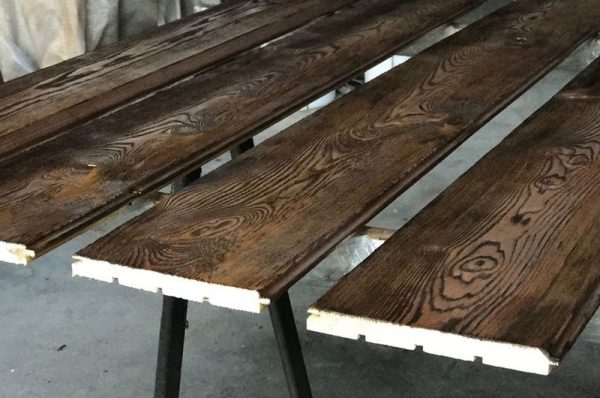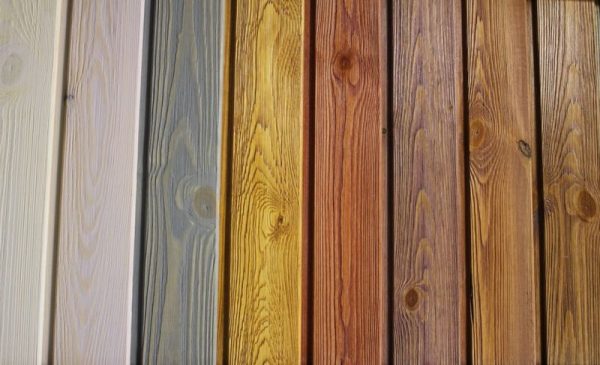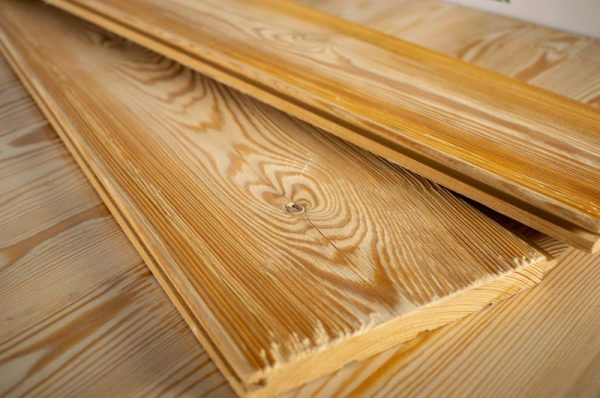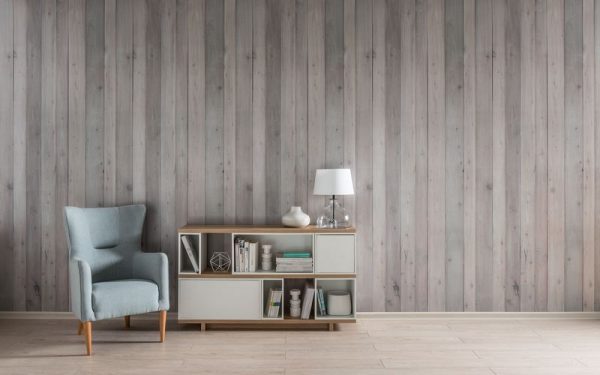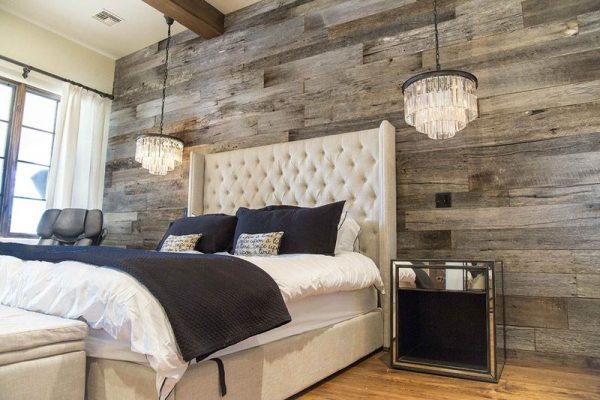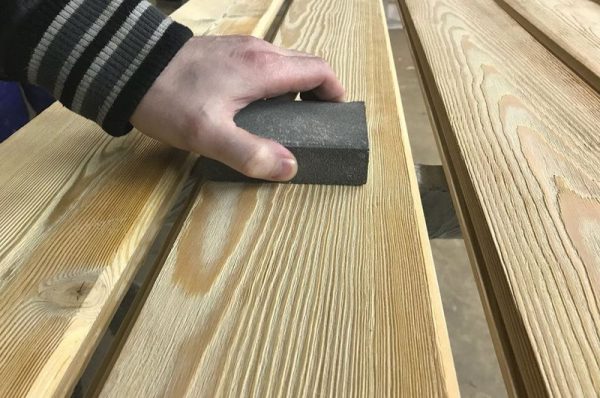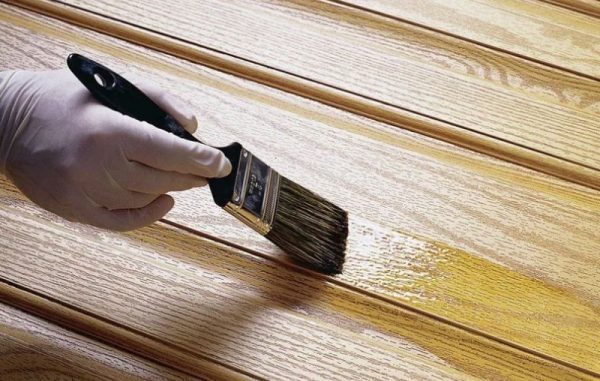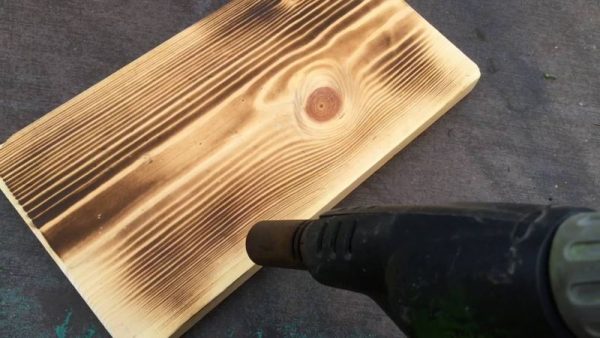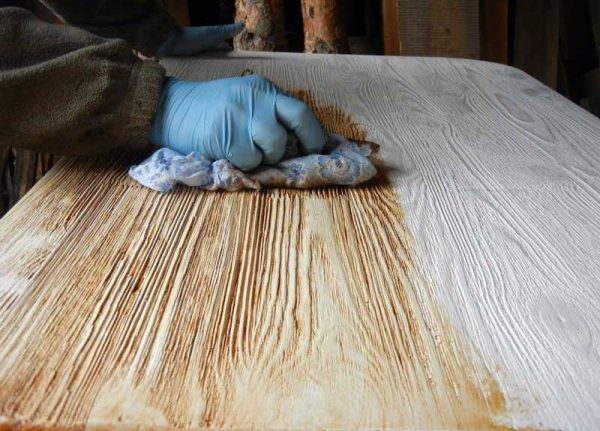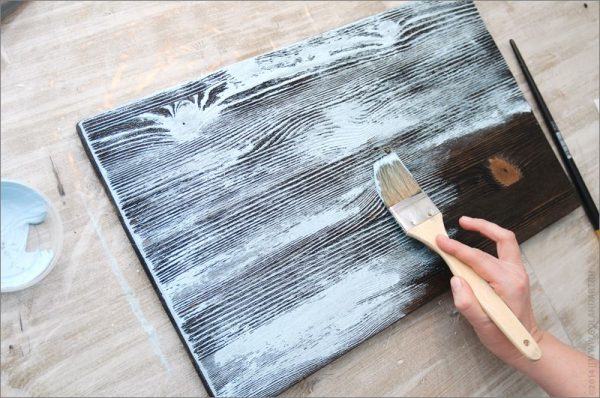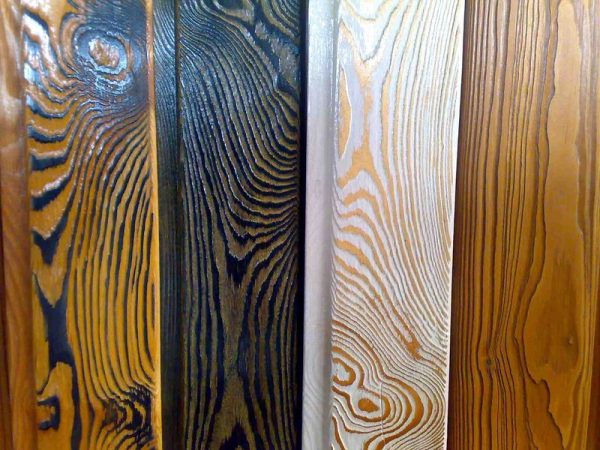The use of environmentally friendly finishing materials has become literally a trend in recent years. When choosing natural wood, you can be sure that it does not emit harmful substances and does not spoil the health of loved ones.
- What is a brushed clapboard
- Features brushed lining
- Types and sizes
- What is the material made of?
- Scope of lining
- Benefits of Brushed Lining
- DIY brushed lining
- Mechanical brushing
- Technique with fire
- First brushing method
- Second brushing method
- Oil Cladding Technique
- The technique of obtaining the effect of "old paint"
- Facade cladding with brushed clapboard
- Errors in the installation of lining
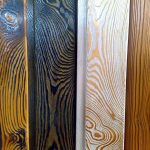
Brushed clapboard is one of the varieties of wall panels made of wood with unique technical characteristics and high aesthetic qualities.
What is a brushed clapboard
This is a board for interior work and decoration of facades of houses, buildings, structures. Brushed lining performs the same functions as a regular one, and differs from the latter only in appearance. In addition to the standard name, it is often called mechanically aged, textured or textured.
Translated from English, “brush” is a brush. To obtain brushed wood, the board is dried in thermal modules, and then soft fibers are removed from its surface with special metal brushes, leaving the solid ones intact. As a result, the board acquires a unique pattern and becomes more durable, wear-resistant, because it is soft wood fabrics that start to age first.
to contents ↑Decorating houses with such material has a luxurious appearance, gives housing aristocracy and respectability.
Features brushed lining
The choice of the type of lining depends on the needs of the user, specific operating conditions and financial capabilities.
Types and sizes
Brushed lining has different textures, colors, patterns and varies in size, presence or absence of a chamfer. According to the type of compounds, the material can be classified into:
- softline;
- landhouse;
- euro lining;
- calm;
- block house;
- American
- double-sided lining.
Depending on the type and quality of wood, the material is divided into four classes:
- Extra. This is a premium-quality knotless lining with a flawlessly smooth surface. The presence of even small cracks, unplaned places, malformations of wood is excluded.
- Class A. High quality material, not including core. On the surface there are knots no more often than one on 1.5 meters of the length of the board. The presence of small pockets, end cracks (up to 2 pieces) is allowed. For lining from coniferous species, a salinity of not more than 10% is allowed.
- Class B. On the boards can be up to 4 knots for every 1.5 meters in length, 2-3 cracks or resin pockets. The formation of minor gaps is not forbidden during the processing of wood; there may be places affected by insects (not more than 5%).
- Class C. There are practically no restrictions on the parameters; openings from knots, cracks, resin pockets, areas of discrepancy with the general color are permissible, there should not be only obvious rot.
Another important parameter of the lining is its size (length, thickness, width).The material is available in different versions in width, while the length of the boards has a pitch of 10 cm. The optimal thickness of the lining for interior decoration is 12.5 mm, for external work - 15-20 mm.
Thick lamellas can easily withstand both their own weight and the mass of insulation materials. The wider the material, the higher the likelihood of its deformation due to changes in temperature and humidity. Narrow boards have better resistance to physical and mechanical stress.
A brushed lining can be solid or spliced when pieces of wood measuring 15-75 cm are connected to one board. The joint is made on a special microchip, additionally coated with glue and fixed under pressure. Fused lamellas are always quite thick (from 15 mm), therefore more expensive and heavy. When buying, it is important to find out what type of glue was used: toxic substances are strictly prohibited for use in interior decoration.
to contents ↑What is the material made of?
Many varieties of wood are suitable for brushing. It is important that the material is beautiful in texture and its surface is malleable. Softwood lining is best suited for brushing, which contains the optimal amount of essential oils and resins that impede moisture absorption and decay. Such material can be used to decorate facades, baths, steam rooms, and its service life is very high (several decades).
Most often for brushed lining, these types of wood are used:
- spruce - used to create a round board, great for interior decoration;
- pine - is the most inexpensive option, but has a low density, so it is scratched;
- larch - boasts a beautiful texture, ideal for making brushed boards, but sold at a high price;
- cedar - has high heat-insulating properties, suitable for external and internal works.
Hardwoods are less suitable for brushing, as they do not have such a clear cut pattern, have less strength and are more expensive to produce. For the manufacture of lining, you can use linden, alder, oak.
to contents ↑Scope of lining
The originally processed lining will become a real decoration of the interior, giving it a noble look. The material is suitable for country, retro, vintage, classic, provence and a number of other styles.
to contents ↑More often brushed board is used for finishing classrooms, dining rooms and kitchens, terraces, balconies, living rooms. It is mounted on the walls, floor, ceiling, beams and ceilings. In addition, the lining is perfect for facing baths, saunas, facades, any rooms that require additional protection against moisture and cold.
Benefits of Brushed Lining
The popularity of a brushed board is based on the many advantages that distinguish this material:
- durability, high wear resistance;
- the possibility of use in places with high humidity;
- suitability for exterior and interior use, for decorating children's rooms;
- harmlessness, environmental friendliness;
- varied color, nice appearance and texture;
- high heat-insulating properties.
DIY brushed lining
If desired, you can brush the finished board at home. This will reduce the cost of buying aged material, which in construction stores always has a higher price.
Mechanical brushing
For work, you should choose boards with the desired pattern. It will be easiest to brush spruce or pine lining, and cedar and larch due to its high density are quite difficult for manual processing. You also need to purchase a brush with metal hairs that can remove soft fibers and leave quite deep grooves. With a large amount of work, it is better to buy a grinding machine with the appropriate brush head or drill with a special abrasive ball.
Also required:
- sandpaper;
- wood preservation impregnation;
- paint brush;
- rag.
After dusting the lining, lay the boards on a workbench or a regular table and fix them so that they are motionless. The lamellas are treated with a brush, evenly pressing on them and performing grooves with a depth of 2-3 mm. Butts work out more carefully.
To obtain wide and deep stripes, a grinder with a stone disc is used. Then the sawdust is again whisked off and sanding the wood is done with sand paper to level and remove fine fibers. Then grinding is done with a nylon brush, and manual processing gives a more effective result.
At the end of the work, the lining is covered with glaze impregnation, which gives decorativeness and protects the material from the influence of negative factors. To make the texture bright and attractive, it is necessary to apply a transparent moisture-proof varnish or a stain on a wax basis to the material. If you want to provide a more interesting shade, an oil for impregnation with the color dissolved in it is applied to the lining.
to contents ↑Technique with fire
A less time-consuming method of aging is considered to be wood burning. It is a kind of brushing and involves the use of a gas burner or blowtorch. The disadvantages of the methodology are the danger of implementation and the scarcity of the finished lining in the color scheme.
First brushing method
From materials and devices you will need:
- board;
- wax;
- rags;
- sandpaper with fine grain;
- gas-burner;
- gas cylinder.
Work is carried out on the street or in a spacious utility room. The flame burners drive along the fibers, creating the pattern that is required. After polishing the boards, cover them with a layer of wax and polish with rags.
to contents ↑Second brushing method
This technology will require a grinder with a brush head for brushing, as well as a blowtorch. Wood is burned with fire to a depth of 1-2 mm, so that the surface becomes almost black. Then they remove the top layer with a machine, achieving the desired pattern of lines, grind the base with emery cloth and tint, varnish.
Oil Cladding Technique
Brushed board is coated with oil to enhance the contrast of the pattern. Choose special protective synthetic oils for outdoor use. The procedure will be as follows:
- open a jar of oil, mix the liquid well with a narrow spatula (agitation is excluded, as many bubbles will appear in the oil);
- make dry brush strokes on wood, taking a minimum amount of oil on the brush;
- rub the liquid on the surface, achieving complete absorption;
- lining is dried for 5 hours;
- grind the material with sandpaper No. 150;
- remove dust from the base with a clean paint brush;
- cover the lining with a protective compound.
The technique of obtaining the effect of "old paint"
To perform this technique, you need to buy black oil brand "Lobasol", as well as any colored oil (you can use OSMO 2708). Also required:
- paint brush;
- rags;
- rubber spatula.
Black oil is applied to the lining with a spatula in a thick layer, after 15 minutes the excess is removed with a lint-free cloth. Using a similar rag, polish the base. After a day, colored oil is applied in a second layer. After 10 minutes, they press with pressure on the wood with a rubber spatula, removing unabsorbed residues. In a day, the lining will be ready for the application of protective bio-composition.
to contents ↑Facade cladding with brushed clapboard
To finish the facade you will have to stock up on time and patience - this process is not quick. First you need to make sure that all the bricks, elements of windows and doors hold tight. You can fix the lining on nails, self-tapping screws, staples, kleimers, while the specific method of fastening must be selected in advance in order to prepare the tool:
- for self-tapping screws - drill, screwdriver;
- for nails - a special nailing pneumatic gun;
- for staples - a construction stapler;
- for kleimers - a hammer or screwdriver, drill, screwdriver, in addition - nails or self-tapping screws.
Also, for sawing panels you will need an electric jigsaw, tape measure, square, pencil, bar for tamping the lining, level. Lamels can be attached vertically, horizontally, diagonally, or combine these techniques. The procedure will be as follows:
- attach the vapor barrier film with brackets so that its parts are 10 cm apart;
- glue the open edges of the film with double-sided tape;
- make a crate of 20 * 40 mm battens with a pitch of 40-50 cm, fix it with screws and dowels;
- in the presence of roughnesses on the walls, put pieces of plywood;
- lay slabs of mineral wool, polystyrene, securing the dowel with nails, and on top with another layer of vapor barrier;
- make markings, then fix the lining, acting in the direction from bottom to top.
to contents ↑
Errors in the installation of lining
Most often, inexperienced masters do not leave gaps when laying lining. Since the temperature and humidity of the environment are variable indicators, the size of the lamellas will regularly change, therefore, in the absence of gaps of 1-2 mm, the lining can warp.
Another “popular” mistake is the neglect of moisture and bioprotection of brushed lining. In this case, individual panels will have to be periodically changed, because without an antiseptic they can rot. Sometimes beginners are in a hurry to assemble the material and forget to check the position of the lamellas by the level, as a result of which some of the elements turn out to be skewed.
To avoid problems, it is necessary to lay strictly in accordance with the technology and use only high-quality lining, and then the facade will last for many years!

